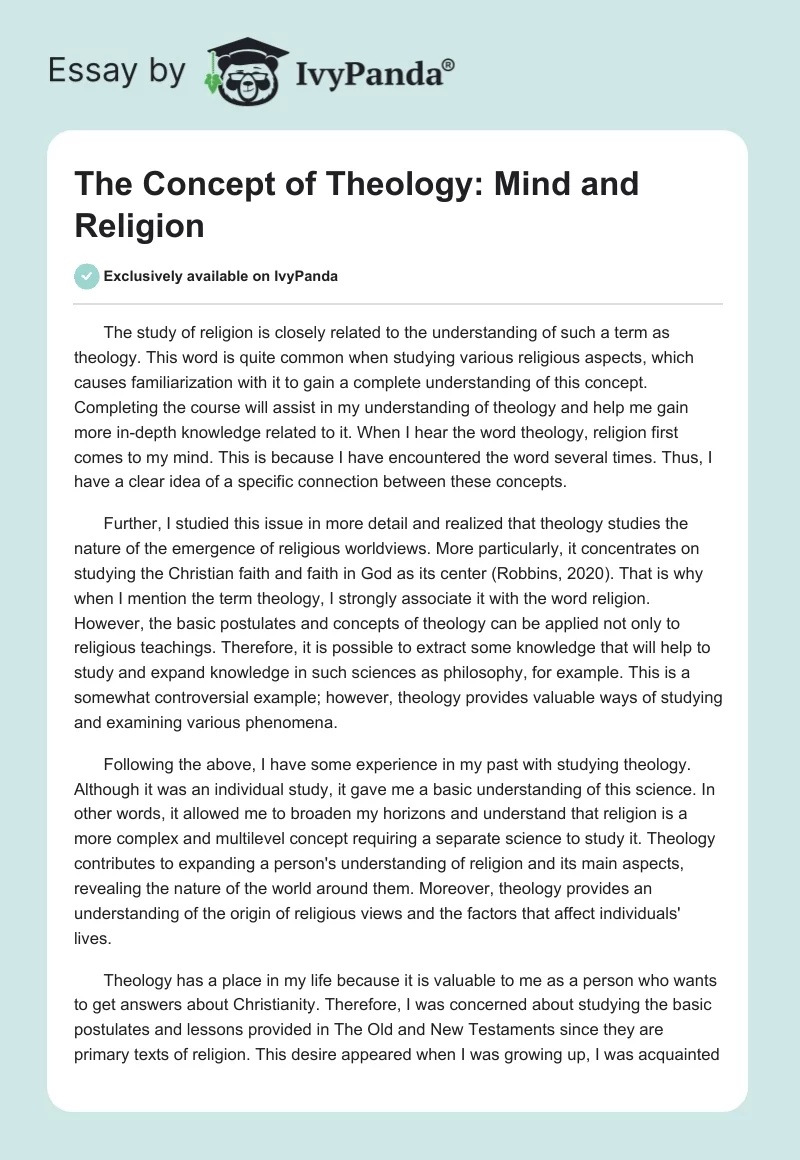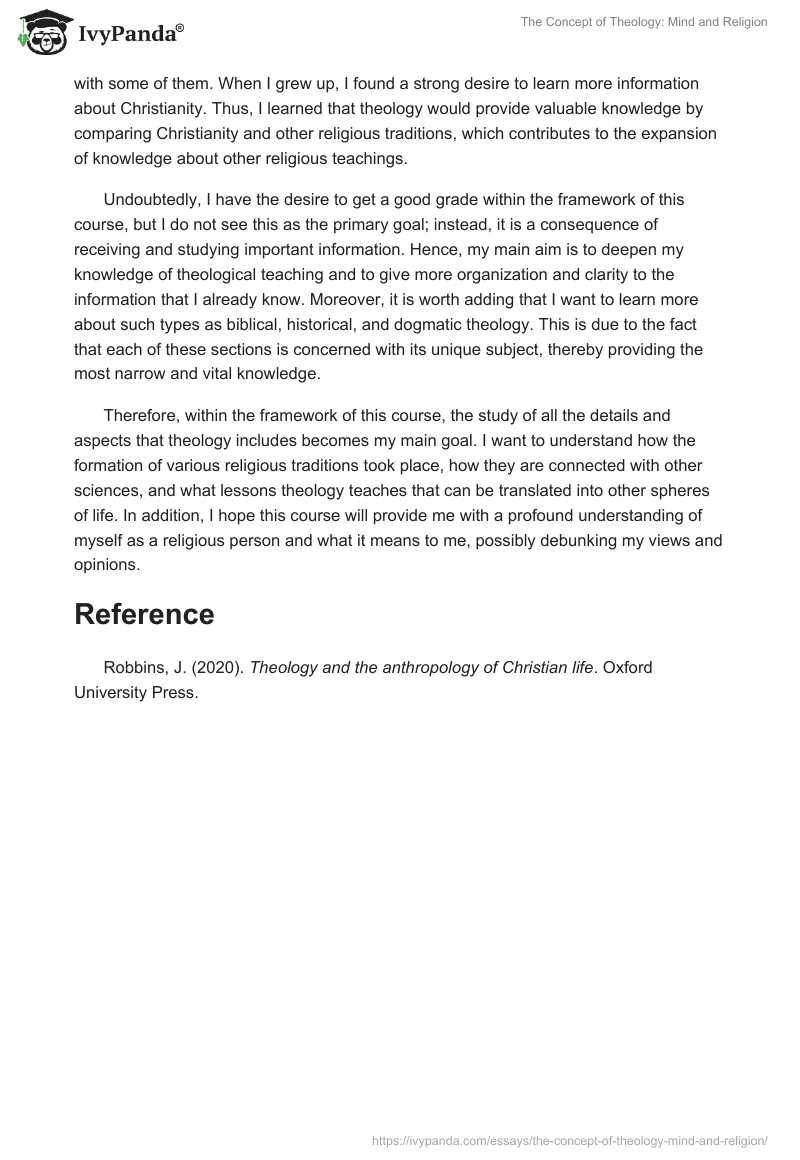The study of religion is closely related to the understanding of such a term as theology. This word is quite common when studying various religious aspects, which causes familiarization with it to gain a complete understanding of this concept. Completing the course will assist in my understanding of theology and help me gain more in-depth knowledge related to it. When I hear the word theology, religion first comes to my mind. This is because I have encountered the word several times. Thus, I have a clear idea of a specific connection between these concepts.
Further, I studied this issue in more detail and realized that theology studies the nature of the emergence of religious worldviews. More particularly, it concentrates on studying the Christian faith and faith in God as its center (Robbins, 2020). That is why when I mention the term theology, I strongly associate it with the word religion. However, the basic postulates and concepts of theology can be applied not only to religious teachings. Therefore, it is possible to extract some knowledge that will help to study and expand knowledge in such sciences as philosophy, for example. This is a somewhat controversial example; however, theology provides valuable ways of studying and examining various phenomena.
Following the above, I have some experience in my past with studying theology. Although it was an individual study, it gave me a basic understanding of this science. In other words, it allowed me to broaden my horizons and understand that religion is a more complex and multilevel concept requiring a separate science to study it. Theology contributes to expanding a person’s understanding of religion and its main aspects, revealing the nature of the world around them. Moreover, theology provides an understanding of the origin of religious views and the factors that affect individuals’ lives.
Theology has a place in my life because it is valuable to me as a person who wants to get answers about Christianity. Therefore, I was concerned about studying the basic postulates and lessons provided in The Old and New Testaments since they are primary texts of religion. This desire appeared when I was growing up, I was acquainted with some of them. When I grew up, I found a strong desire to learn more information about Christianity. Thus, I learned that theology would provide valuable knowledge by comparing Christianity and other religious traditions, which contributes to the expansion of knowledge about other religious teachings.
Undoubtedly, I have the desire to get a good grade within the framework of this course, but I do not see this as the primary goal; instead, it is a consequence of receiving and studying important information. Hence, my main aim is to deepen my knowledge of theological teaching and to give more organization and clarity to the information that I already know. Moreover, it is worth adding that I want to learn more about such types as biblical, historical, and dogmatic theology. This is due to the fact that each of these sections is concerned with its unique subject, thereby providing the most narrow and vital knowledge.
Therefore, within the framework of this course, the study of all the details and aspects that theology includes becomes my main goal. I want to understand how the formation of various religious traditions took place, how they are connected with other sciences, and what lessons theology teaches that can be translated into other spheres of life. In addition, I hope this course will provide me with a profound understanding of myself as a religious person and what it means to me, possibly debunking my views and opinions.
Reference
Robbins, J. (2020). Theology and the anthropology of Christian life. Oxford University Press.


